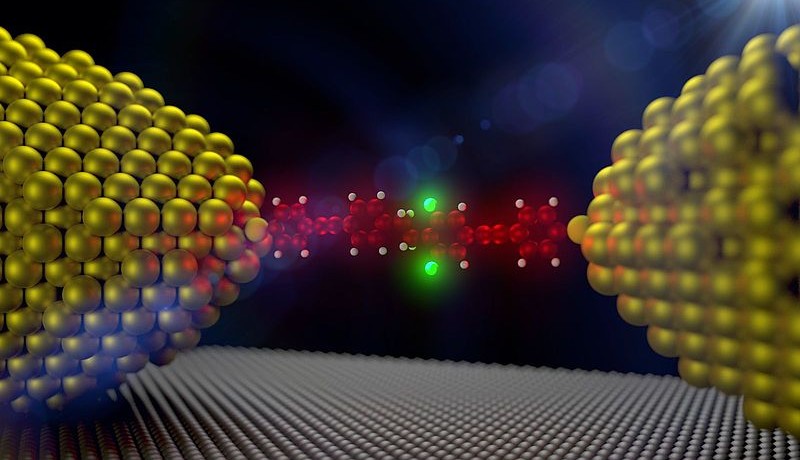Single-molecule diode sets new record

Diodes are the traffic lights of the electronics world – they determine whether or not current can flow through a circuit. Researchers at TU Delft in the Netherlands recently made a diode consisting of a single molecule with a rectification ratio of 600 – much higher than the value of 15 measured in earlier research.
Diodes are the traffic lights of the electronics world – they determine whether or not current can flow through a circuit. Researchers at TU Delft in the Netherlands recently made a diode consisting of a single molecule with a rectification ratio of 600 – much higher than the value of 15 measured in earlier research.
“The first single-molecule diode was made in 2005”, says graduate student Mickael Perrin. “Although it works, diodes of this sort have been pretty poor traffic lights up to now, with rectification ratios of around 10 to 1. That’s not very impressive compared to the performance of conventional diodes, which have ratios from 10,000 to 100,000.”
Mickael Perrin and his colleagues developed a diode based on a synthetic molecule that can achieve a rectification ratio of 600. This molecule has a benzene ring at each end, joined by an ethane bridge. The bridge effectively acts as a threshold, allowing current to flow when the energy levels are the same at both ends but blocking current when the levels are different.
“The first single-molecule diode was made in 2005”, says graduate student Mickael Perrin. “Although it works, diodes of this sort have been pretty poor traffic lights up to now, with rectification ratios of around 10 to 1. That’s not very impressive compared to the performance of conventional diodes, which have ratios from 10,000 to 100,000.”
Mickael Perrin and his colleagues developed a diode based on a synthetic molecule that can achieve a rectification ratio of 600. This molecule has a benzene ring at each end, joined by an ethane bridge. The bridge effectively acts as a threshold, allowing current to flow when the energy levels are the same at both ends but blocking current when the levels are different.
